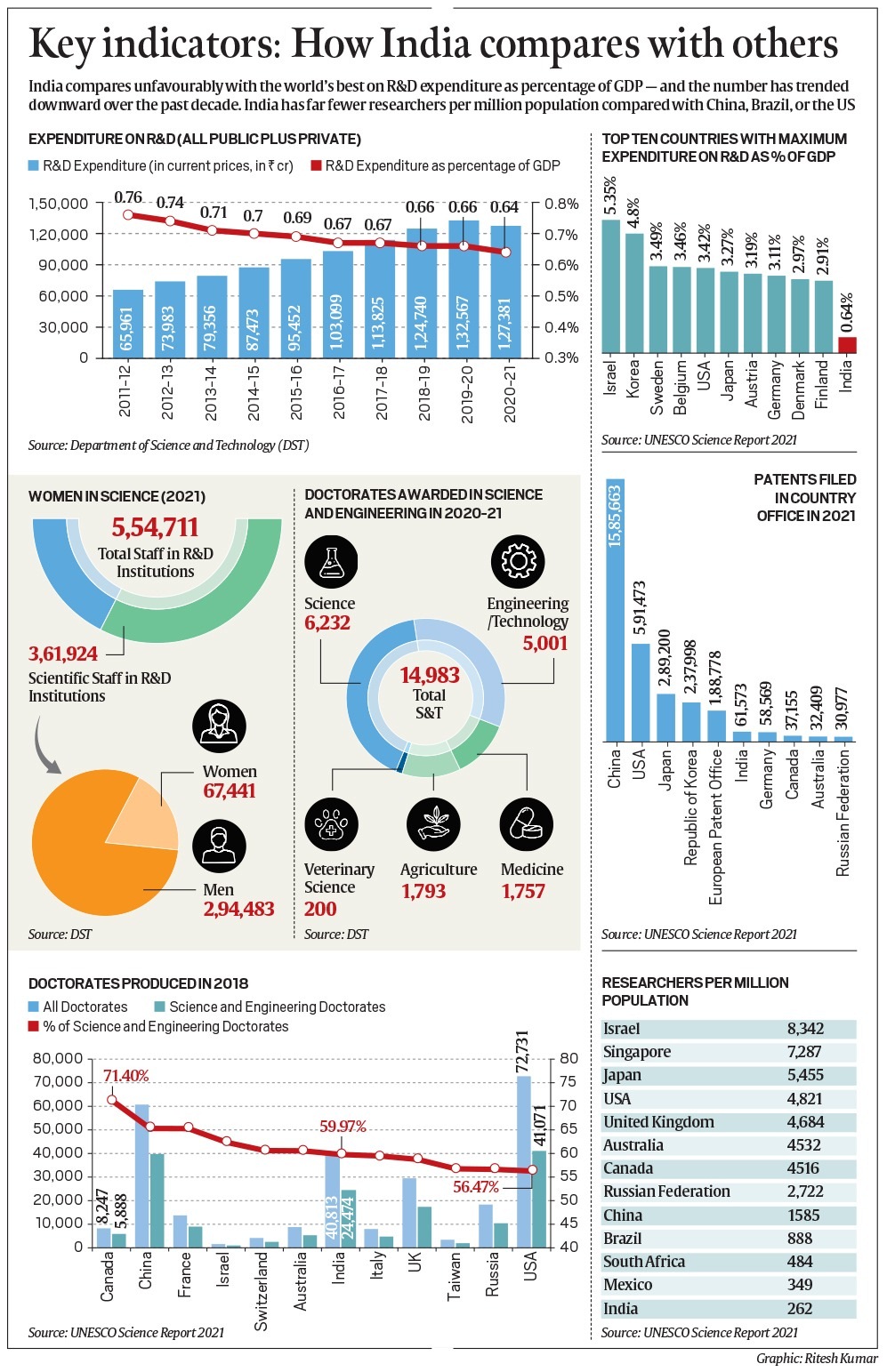LAGGING OF INDIA IN RESEARCH AND DEVELOPMENT
A huge pool of science and engineering graduates, a large network of laboratories and research institutions, and active involvement in some of the frontline areas of scientific research usually puts India among the leading countries with deep scientific abilities. However, in comparative terms, India lags behind several countries, some with much more limited resources, on a variety of research indicators.
Primary among these is the money India spends on research and development activities. For more than two decades now, the Centre’s stated objective has been to allocate at least two per cent of the national GDP on R&D. Not only has this objective not been met, the expenditure on research as a proportion of GDP has gone down, from about 0.8 per cent at the start of this millennium to about 0.65 per cent now. For the last decade or so, this share has remained stagnant.
This does not mean that money for research has not increased. The spending on research has more than tripled in the last 15 years, from Rs 39,437 crore in 2007-08 to over 1.27 lakh crore in 2020-21. But India’s GDP has grown faster, and so the share of research has gone down.

At least 37 countries spent more than 1 per cent of their GDP on R&D in 2018, the last year for which data from all countries is available, according to the 2021 UNESCO Science Report. Fifteen of these spent two per cent or more. Globally, about 1.79 per cent of (world) GDP is spent on R&D activities. Unlike India, at the global level, growth in R&D expenditure has outpaced GDP growth.
India spent only 42 US dollars (in PPP terms) per researcher in 2020, compared with nearly 2,150 by Israel, 2,180 by South Korea and 2,183 by the United States.
Moreover, women comprise only 18 per cent of total scientific researchers in India, while globally this number was 33 per cent.
Research in universities
India has nearly 40,000 institutions of higher education, mostly colleges. More than 1,200 of these are full-fledged universities. Only one per cent of these engage in active research, according to the detailed project report on NRF.
This is the biggest anomaly that exists in the Indian system.
Research output
India produced 25,550 doctorates in 2020-21, of which 14,983 were in science and engineering disciplines. This 59 per cent proportion in the overall doctorates compares well with other countries, putting India in the seventh rank overall. Even in absolute terms, India’s annual output of science and engineering doctorates is right at the top, with only the US, China and the United Kingdom producing more.
But because of India’s large population, this is not impressive in proportional terms. In fact, the number of researchers per million population in India, 262, is extremely low compared with even developing countries like Brazil (888), South Africa (484) or Mexico (349).
Publications and patents
Data from DST showed that Indian researchers published 149,213 articles in science and engineering journals across the world in 2020, almost two and a half times more than a decade earlier. However, it still constituted only 5 per cent of all the articles. Chinese researchers contributed 23 per cent, while US researchers accounted for 15.5 per cent.
In 2021, a total of 61,573 patents were filed in India, making it the sixth largest in the world. But this was nowhere close to the nearly 16 lakh patents filed in China, and about six lakh in the United States that year.
Comments
Post a Comment